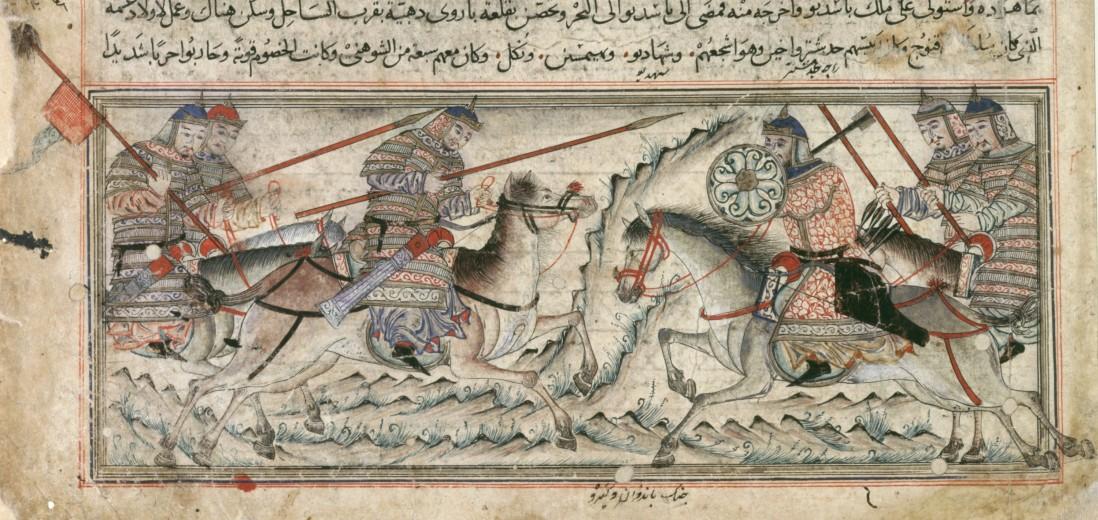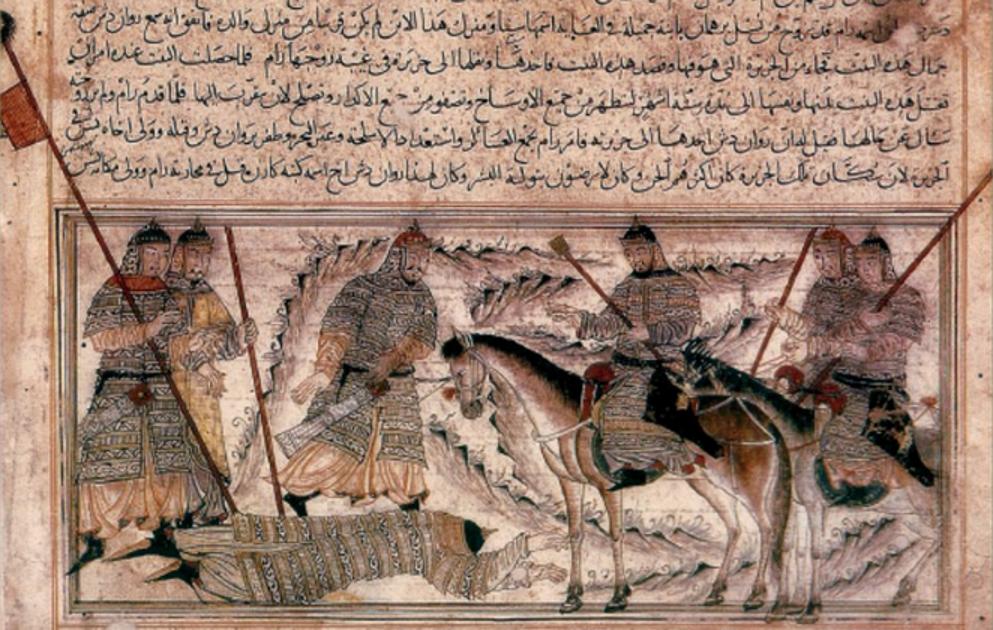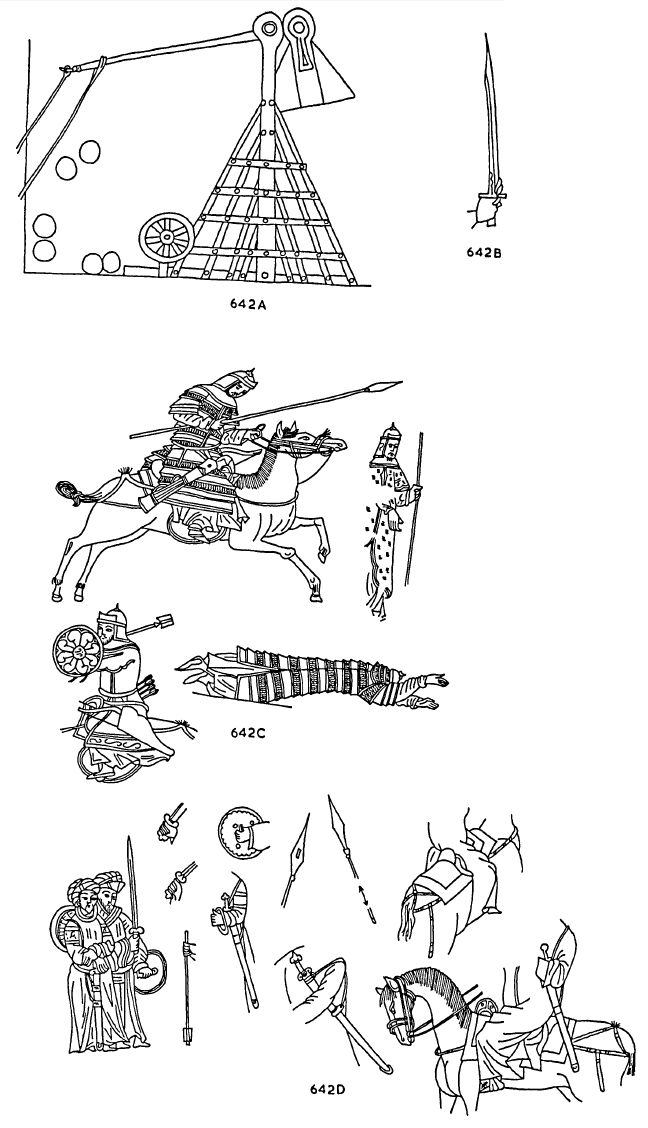Try Amazon Fresh

Try Amazon Audible Plus
Illustrations of Ilkhanid Heavy Cavalry in the 1305-14
Jami‛ al-Tawarikh
by Rashid al-Din.
Universal History or Compendium of Chronicles
Ğāmi‛ al-tavārīḫ. Rašīd al-Dīn Fazl-ullāh Hamadānī
Eskandar (Alexander the Great) enters the Land of Darkness

Eskandar, or Alexander the Great, went into the Land of Darkness to seek the Water of Life, but failed to find it.
Here, he sends his horse forward into the swirling darkness.
His followers look anxious and even two of the horses stare at each other, uncertain of what they are about to encounter.
The flame-like protuberances on Eskandar's helmet probably allude to his identification with the qur'anic figure Dhu'l-Qarnayn ('Lord, or Possessor, of Two Horns').
Il-Khanid: Tabriz, 1314
Opaque watercolour, ink, gold and silver on paper
Edinburgh University Library, MS. Or. 20, fol. 19r
Source: The Fitzwilliam Museum.
Battle of the Pandavas and the Kauravas,
a scene from the Indian epic, the Mahabharata

Il-Khanid: Tabriz
Khalili Collection, MSS. 727, folio 25a
Fig. 183; p158 Rogers. Fig. 37; K21 Blair.
Ravan, king of Lanka and king of the demons, lies dead before Rama,
a scene from the Indian epic, the Ramayana

Il-Khanid: Tabriz
Khalili Collection, MSS. 727, folio 30b
Fig. 186; p159 Rogers. Fig. 38; K24 Blair.
Ilkhanid Light Cavalry
More pictures from the Jami‛ al-Tawarikh of 1305-14
Referenced as fig. 642C on pp. 173-4, vol. 1, The military technology of classical Islam by D Nicolle
The spread of lamellar armour from Central Asia across the Muslim world is altogether easier to chart. Its terminology is generally less contentious and the illustrated material is simpler to interpret. As discussed earlier: such a form of defence may have originated in the ancient Middle East but by the immediate pre-Islamic centuries lamellar armours of iron or a mixture of iron and bronze were far more characteristic of Central Asia and eastern Iran than the Fertile Crescent35
(Figs. 61, 67, 82, 428, 435, 437, 440, 443, 451, 453, 454, 455, 462, 463, 464, 471, 472, 474, 478, 480 and 481).
There is, however, some evidence to suggest that they were known in 7th century Arabia, although they are likely to have been rare.36 Indeed, lamellar would seem to have been highly prized and expensive even in those Transoxanian regions where it was not common, and remained so well into the Muslim era.37
The increased importance of lamellar in eastern Islam and in the partially subdued Christian regions of the Caucasus is clearly documented as is its spread westward into Muslim Anatolia towards the end of the period under review38
(Figs. 220B, 306, 309, 316, 348, 410, 442, 444, 447, 638, 641 and 642C).
References could be multiplied ten- or twenty-fold if one included all those concerning armours known to be of lamellar, such as the jawshan and kamarband, rather than simply those that described lamellar, its appearance, construction or fastenings.
34. Oakeshott, op. cit., pp, 269-270.
35. Robinson, Oriental-Armour p. 130; Laufer, op. cit., pp. 208 and 214; W. Hauser, "The Persian Expedition, 1933-1934," Bulletin of the Metropolitan Museum of Art XXIX (1934), p. 8.
36. Schwarzlose op. cit., pp. 327 and 346.
37. Narshakhī, op. cit., p. 46; al Ṭabarī: op. cit., vol. II, pp. 256 and 1889.
38. Firdawsī, op. cit., pp. 270, 273, 427, 688 and 953; Anon., The Book of Dede Korkut, p. 166; Rust'haveli, op. cit., verse 220.








